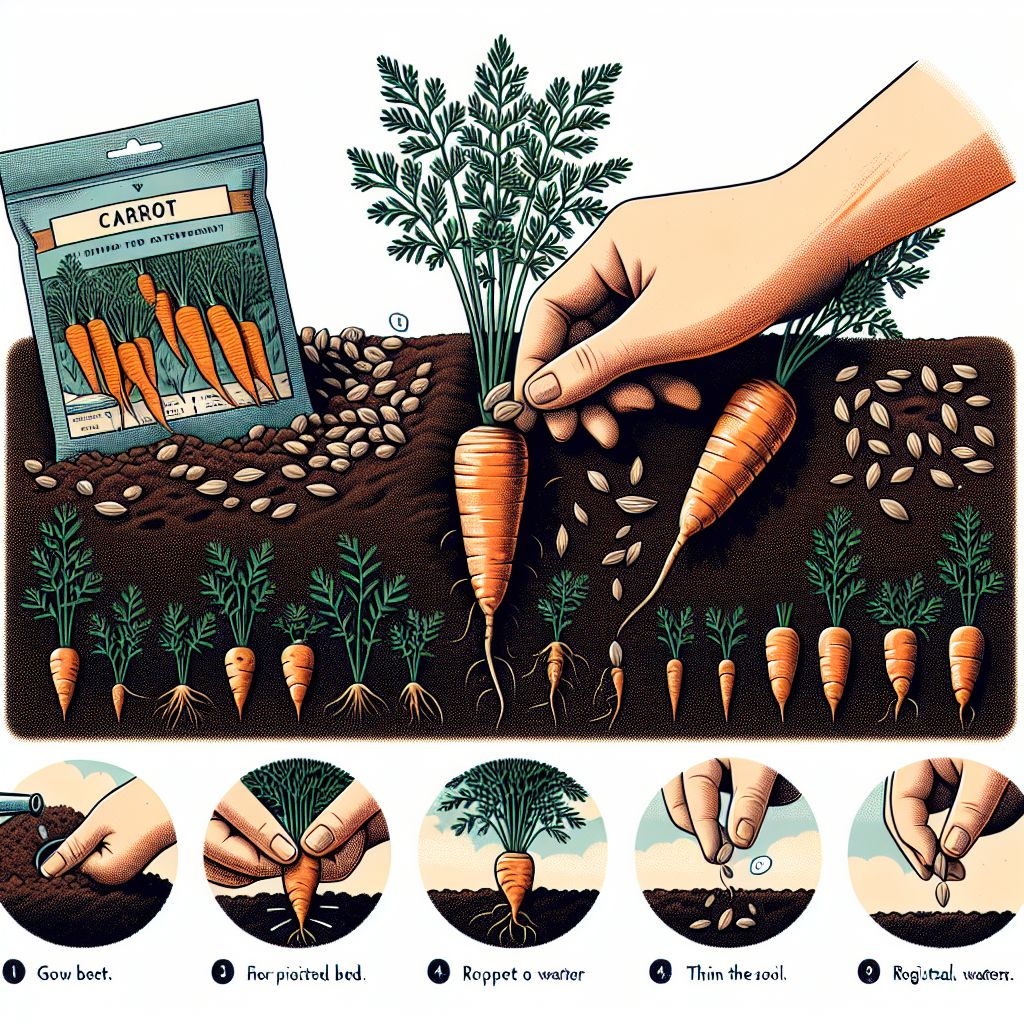
How to raise carrots from seed
How to Raise Carrots from Seed: A Comprehensive Guide
Growing your own carrots from seed is a rewarding process that can yield delicious, fresh produce right from your garden. This article will explore how to successfully raise carrots, including soil preparation, seeding techniques, and maintenance tips.
Understanding Carrot Varieties
Before you start planting, it's essential to choose the right type of carrot for your garden. Carrots come in various shapes and sizes, and selecting the right variety can make a significant difference in your gardening success. Here are a few popular carrot varieties:
- Imperator: Long and tapered, they are commonly found in grocery stores.
- Nantes: Sweet, cylindrical carrots that are ideal for fresh eating.
- Danvers: Traditionally grown in North America, they are known for their robust nature.
- Parisian: Round and perfect for container gardening.
Preparing the Soil
Carrots thrive in loose, well-draining soil. The first step in how to raise carrots from seed is soil preparation. Here’s how to prepare your soil:
- Choose a Sunny Location: Carrots prefer full sunlight, so select a spot in your garden that receives at least six hours of sun daily.
- Clear the Area: Remove any weeds, rocks, or debris that may hinder growth.
- Amend the Soil: Mix in organic matter like well-rotted compost to improve soil aeration and drainage.
- Test Soil pH: Aim for a pH level between 6.0 and 7.0 for optimal growth.
Sowing the Seeds
It’s time to get your hands dirty! Here’s a step-by-step guide on how to sow carrot seeds:
- Wait for the Right Time: Plant seeds when the soil temperature is at least 55°F (13°C) to ensure germination.
- Prepare Seed Rows: Create shallow furrows about 1/4 to 1/2 inch deep, spaced 12 to 18 inches apart.
- Sow the Seeds: Space seeds about 1 to 2 inches apart within the rows. It’s better to sow them sparsely to avoid overcrowding later.
- Cover and Water: Gently cover the seeds with soil and water lightly to ensure they settle.
Maintaining Your Carrots
Once you’ve sown your seeds, there are a few maintenance practices to ensure healthy growth:
Watering
Consistent moisture is crucial for carrots. Here are some tips:
- Water regularly, aiming for about 1 inch of water per week.
- Avoid letting the soil dry out, as this can lead to forked or woody carrots.
Thinning Your Seedlings
After seeds have germinated and seedlings are about 2 inches tall, it’s essential to thin them out:
- Remove the weakest seedlings, leaving the strongest ones about 2 to 4 inches apart.
- Thinning helps prevent competition for nutrients and encourages healthier growth.
Weeding and Pest Control
Keeping your carrot patch free from weeds and pests is vital. Implement these practices:
- Hand pull weeds regularly to avoid disturbing the carrot roots.
- Use organic mulch to suppress weeds and retain soil moisture.
- Monitor for pests such as carrot flies and aphids; consider using insecticidal soap if infestations occur.
Harvesting Your Carrots
Knowing when to harvest is crucial for enjoying sweet, tender carrots. Here’s what to look for:
- Check the label of your seed variety to know the average days to maturity (typically 60 to 80 days).
- Carrots are ready to harvest when they reach their desired size.
- Loosen the soil around the carrots with a garden fork before pulling them to prevent breakage.
Storing Carrots
After harvesting, proper storage will keep your carrots fresh for weeks. Here are some storage tips:
- Remove greens immediately after harvesting to prevent moisture loss.
- Store carrots in a cool, dark place; a refrigerator or a root cellar is ideal.
- Consider placing them in damp sand or peat to maintain moisture levels.
Troubleshooting Common Issues
Even with the best care, you may encounter some challenges. Here are common issues and their solutions:
Common Carrot Problems
- Forked Carrots: Caused by compacted soil or irregular watering.
- Pest Infestation: Check for signs of carrot flies or other pests; use row covers to prevent them.
- Blistering or Abnormal Growth: This may result from overly acidic soil; testing and adjusting pH can help.
Enhancing Future Carrot Harvests
To improve your carrot-growing experience in the future, consider these additional tips:
- Rotate your crops to prevent soil-borne diseases.
- Experiment with different carrot varieties each year.
- Keep a gardening journal to document successful practices and challenges.
Conclusion
Growing carrots from seed can be a fulfilling endeavor that brings you closer to nature and provides fresh produce for your table. By following the guidelines outlined in this article, you can ensure a productive carrot garden. Remember, patience is key; with proper care and attention, your efforts will yield sweet, crunchy carrots to enjoy in countless culinary creations.
Now that you're equipped with essential knowledge on how to raise carrots from seed, it’s time to start your planting adventure. Enjoy the journey, and happy gardening!
By Guest, Published on August 18th, 2024